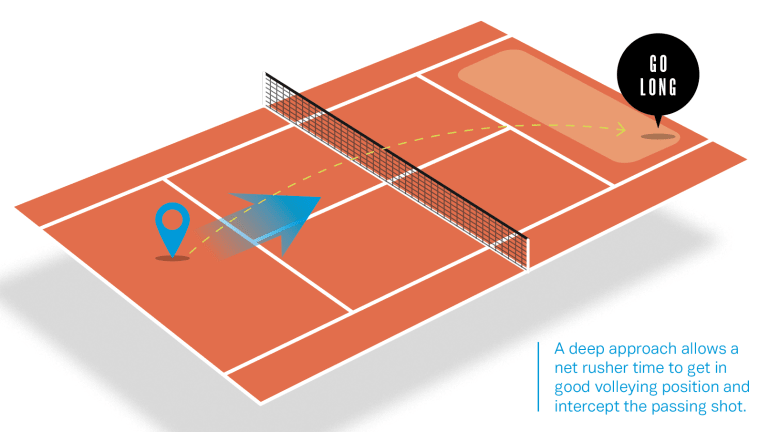Click here to read Part 1
Some players view the approach shot as a mid-court putaway in disguise. Rather than move through the shot to gain position, they gather themselves and take a big swipe at the ball, looking for an outright winner or a meager reply that leads to a sitter volley.
Others opt for more abbreviated technique, keeping their momentum moving through contact and treating the approach like a well-timed pass in basketball—the assist that sets up a winning shot. To do that, you need command over the direction, spin and placement of the shot.
